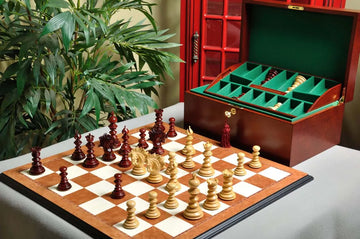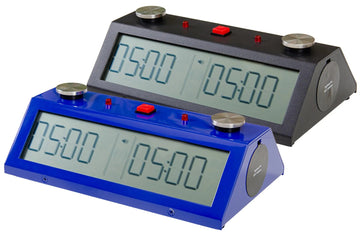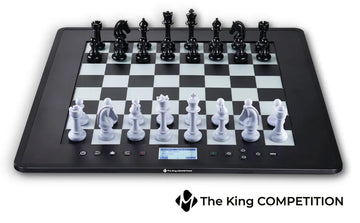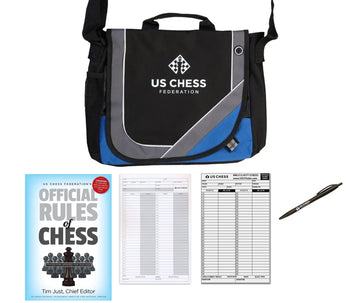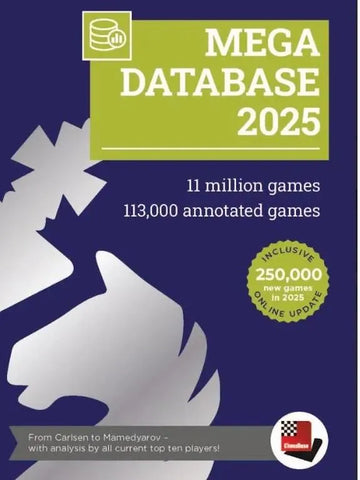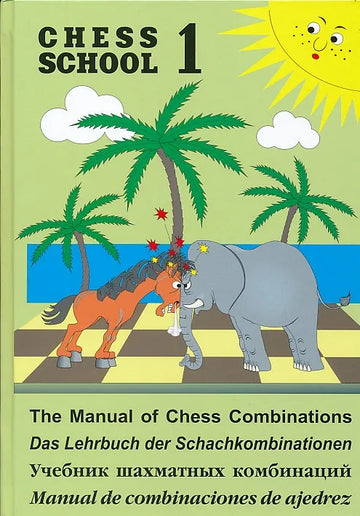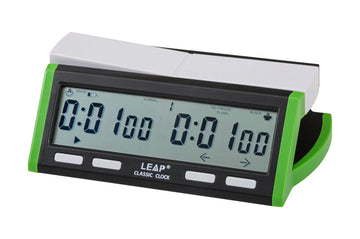The US Chess Supernational is Always an Epic Tournament
The US Chess SuperNational is a US Chess Junior Grand Prix tournament. It has shattered records since 1997. Usually, three separate chess nationals determine the high school, middle school, and elementary school champions.
But the SuperNationals is one giant super-tournament that happens every four years. Three championships happen all at one place and time. Past winners have grown up to be some of the most well-known players in the world.
This year, we will witness history in the making again. In May, SuperNationals VIII will be held at the Orange County Convention Center in Orlando, FL.

Here's why the US Chess SuperNationals tournament is always an epic tournament.
1997: The first US Chess SuperNational Takes Place
The first SuperNationals took place in April 1997 in Knoxville, Tennessee. When the event was first proposed, some didn't think even 3,000 kids would attend. In the end, 4,235 children from 48 states participated in the tournament.
It was the largest tournament ever to take place in the US. The kid chess players weren't just all under one roof. They were in a single room. Here were some key results:
- Harutyun Akopyan won the K-12 chess national high school event. He broke a record by winning his tenth national scholastic title. He later became an FM.
- Nine-year-old Hikaru Nakamura fatefully secured first place in the K-3 section. His older brother, Asuka Nakamura, took first place in the K-6 section.
- Meanwhile, Jennifer Shahade, who later became a WGM, tied for first place in the high school blitz side event.
In the July 1997 edition of Chess Life, the event was called the 'Woodstock of Chess.' This was not just because of its large size but also because much went wrong in execution. Still, despite traffic jams, registration errors, and hotel accommodation woes, the event made a mark on tournament history.
Related: How to Run the Perfect Chess Tournament
Event coordinators learned from the first SuperNationals event. They applied their knowledge to make the 2001 tournament go more smoothly.
2001: US Chess SuperNational II Features Irina Krush, John Bartholomew, and More
Once again, the second-ever US Chess SuperNationals broke a record as the largest tournament ever held. It took place in Kansas City, Missouri. Over 4,606 players participated.
Four students won scholarships to the University of Texas at Dallas, valued at $45,000 each year. One of the winners was John Bartholomew. He was just 14 then.
The high school section was heavily anticipated this year. Irina Krush was considered a favorite from the start. She was an IM at the time. Hikaru was another favorite. He was now 13 years old and an IM. Unfortunately, the two would not go head to head like Hikaru hoped. Krush would end up placing fourth. She tied with Daniel Rensch, who is now an IM and the Chief Chess Officer of Chess.com.

Here are some other highlights:
- Hikaru tied for first place in the national high school championship alongside now FIDE Master Samsen Benen and Noah Siegel.
- Fabiano Caruana tied for second place in the K-6 section.
- Robert Hess won the K-3 championship.
Related: Basic Scholastic Chess Club Starter Kit - For 20 Members
2005: Daniel Naroditsky and Ray Robson Among Winners at US Chess SuperNational III
For the third time in a row, SuperNationals III broke the record for being the biggest chess event in history. This year, the event saw 5,270 attendees. It was hosted at Gaylord Opryland Hotel in Nashville, Tennessee. A total of four SuperNationals would be held there.
Renowned Grandmasters gave lectures, held simuls, and signed autographs as side events. Special guests included:
- Anatoly Karpov
- Maurice Ashley
- Hikaru Nakamura
- Susan Polgar
- and Yasser Seriawan

Daniel Naroditsky won the K-3 tournament. Ray Robson won the K-6 tournament. Both players achieved clean 7-0 sweeps and would grow up to become GMs.
2009: SuperNationals IV Doesn't Shatter Records but is Still Prominent
Unlike past events, the US Chess SuperNational IV fell short of breaking previous records. Still, it achieved an impressive turnout of 5,243 players.
Plus, there were a wide variety of side events. Grandmasters who held simuls at the event were:
- Alex Stripunsky
- Alexander Shabalov
- and Maurice Ashley
GM Joel Benjamin also did a book signing.
In particular, there were several opportunities to see strong female chess players. IM and WGM Anna Zatonskih signed autographs and held a simul. WGM Jennifer Shahade gave a presentation on chess, writing, and art.
GM Alexandra Kosteniuk, the Women's World Champion at the time, gave two simuls that resulted in 100 wins and seven draws. She also gave a lecture on how to improve at chess, and she held two book signing sessions.
Related: US Chess Women Coffee Mug
Here were some other highlights:
- Former World Champion Garry Kasparov made the ceremonial first moves.
- After securing the K-12 championship, Robert Hess was awarded the Grandmaster title.
- Meanwhile, Ryan Joseph Moon and Ben Gershenov tied for first in the K-9 section.

The University of Texas at Dallas also gave scholarship awards to K-12, K-9, and K-6 winners valued at $80,000 each year.
2013: SuperNationals V Continues Growing
2013: SuperNationals V Continues Growing
Despite the previous turnout, the US Chess SuperNational V was once more the biggest chess tournament in US history. This year, 5,335 participants attended.
Here are some event highlights:
- Atulya Shetty emerged as the K-12 champion. He is now an IM.
- GM Akshat Chandra secured the K-9 championship.
- David Peng, who is now a FIDE Master, won the K-6 championship.
- The University of Texas at Dallas awarded scholarships to each section champion worth $68,000 each year.

There were also plenty of side events at the tournament. Once again, GM Alexandra Kosteniuk returned to hold a 40-board simul. Jennifer Shahade gave a talk on popularizing chess.
Attendees could also enjoy a screening of Brooklyn Castle, book signings, information on college chess programs, and a friends and parents tournament.
Ryan Christianson and Jeremy Paul, a duo known for their bughouse performances, secured their fifth and final scholastic bughouse championship. In the final round, they took down Atulya Shetty and his partner, Michael Bowersock.
With Ryan leaving competitive kids chess for college, Jeremy decided it was also time to leave bughouse.
2017: SuperNationals VI Welcomes Strongest Young Players Yet
Outpacing the previous year yet again, the US Chess SuperNationals VI is currently the largest-rated tournament in history. It took place in Nashville, Tennessee, and 5,575 players attended.
This year marked a steep rise in competition. Strong masters went home without trophies, and one 2400-rated player didn't even reach the top 40. There are now 25 different categories of sections, and they are located across multiple rooms.
For comparison, while the kindergarten section in 1997 had only 73 players, the two K-1 sections at the VI tournament had 390 participants.
Max Lu, formerly the youngest US chess master in history, secured first place in the K-6 Blitz side event and the top spot in the Bughouse side event with his partner Drew Justice.
Among side events were book signings, exhibitions, and lectures with renowned GMs like:
- Garry Kasparov
- Maurice Ashley
- and Irina Krush
WGM Sabina Foisor and IM/WGM Nazi Paikidze also attended.
Young players could also meet the world record holder for blindfold chess, GM Timur Gareyev.
A total of six players tied for first in K-12 sections, including:
- FM Roland Feng
- IM Kesav Viswanadha
- GM Andrew Tang
- Andrew Liu
- IM Vignesh Panchanatham
- and IM Edward Song
FIDE masters Rayan Taghizadeh and Wesley Wang tied for first in the K-9 championship.
None other than the infamous GM Hans Niemann placed first in the K-8 championship.

Related: Are You Playing a Chess Cheat?
Five players, including multiple IMs, tied for first in the K-6 championship. Multiple titled players also placed first in the K-3 and K-1 championships, speaking to how competitive the turnout has become.
Heading to Supernationals VIII
Despite how well-known and continuously record-shattering this event has become, many coaches believe the event should have had an even bigger turnout in 2017.
Moreover, SuperNationals VII was canceled due to the COVID-19 pandemic, which was a huge loss for young chess players, especially those who may have missed their first or last chance to participate.
Now we have to ask ourselves: how will this affect the turnout at SuperNationals VIII?
SuperNationals VIII is set to occur from May 8th to May 11th at the Orange County Convention Center in Orlando, FL. Like previous SuperNationals, it will likely break records as the biggest tournament ever. Some are estimating that 8,000 players will attend. Undoubtedly, a future Super Grandmaster will make their debut this May.
Some guests at this year's event will be:
- GM Awonder Liang, the 2017 US Junior Chess Champion
- WGM/IM Carissa Yip, the 3-time US Women's Chess Champion
- and WGM Tatev Abrahamyan, the 3-time runner-up for the US Women's Championship.
DaVaun Williams, known as H1 Chess on YouTube, will analyze games for players under 1300 who are not playing in championship sections. There will also be seminars, lectures, and a friends and family tournament.
Entry fees for the main event are $100 per participant by 3/24, $150 by 4/14, $225 by 4/28, and $350 by 11 AM Eastern Time on Wednesday, 5/7. There is no on-site registration for the main event.
Registration is on-site only for the bughouse side event, and the entry fee is $50. The blitz side event entry fee is $50 by 4/14 and $80 after that.
Lastly, a new side event for kid chess players, the National Puzzle Championship, will occur. The event is in partnership with ChessKid, and players will need an internet-capable laptop to participate. The entry fee is $20 before 4/14 and $30 after, with no on-site entries.
FAQ: US Chess Supernational is Always an Epic Tournament
The USCF Grand Prix Program includes all tournaments that meet criteria based on prize fund size, section eligibility, and other specific factors. Players are awarded Grand Prix (GP) points based on their performance, section, and event(s) attended. At the end of the year, the top ten players with the most points receive an award.
In 2024, the Grand Prix first-place winner was awarded $5000.
The US Chess SuperNationals is a US Chess Junior Grand Prix event, the Grand Prix for kid chess players.
The largest rated US chess tournament ever was the US Chess Supernationals VI, with an attendance of 5,575 players. The tournament has almost consistently broken records every year since its inception.
This year, we could see as many as 8,000 participants, which would make it the largest US chess tournament by far.
Hikaru Nakamura is the best American chess player. He is a six-time US Chess Champion and Super Grandmaster with a current FIDE ELO of 2802. He is rated second in the world, behind the great Magnus Carlson.
Fabiano Caruana is another American Super Grandmaster among the top ten players. He is ranked fourth in the world and has an ELO of 2783.
There's no telling how far you can go in chess unless you try. Joining a chess club is a great way to get more experience in the game and learn from stronger players.
Still, even if you never decide to be a competitive or professional chess player, joining a chess club is still worth it. The greatest chess players in the world achieve incredible things, but you can gain a lot from going to a chess club, even as a beginner or casual player.

